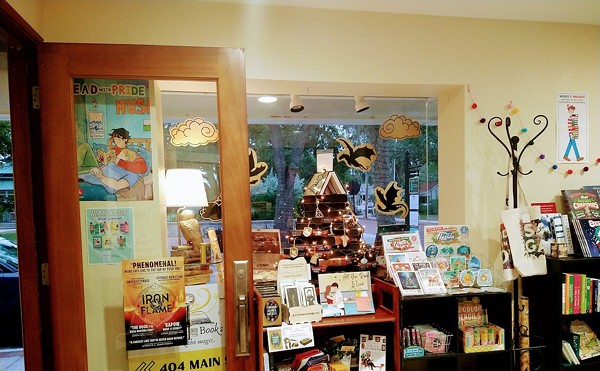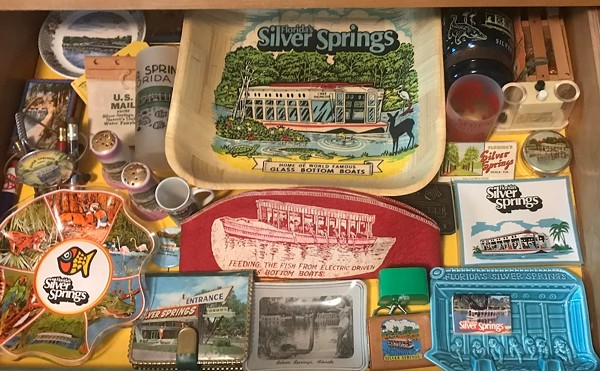High in the Yew tree Lombo lies,
Tossed betwixt the seas and skies,
In faith a merry place to sit
To whet the edge of Lombo’s wit.
When Jeanne and I fell in love with our little cottage, we were intrigued with its builder, Mark Dixon Dodd (1888-1952), who designed the 19 quirkily charming houses forming the center core of the Driftwood neighborhood in Southeast St. Pete. A little research told us he was “an artist, a teacher, a designer of fine homes, and honored citizen of St. Petersburg. He was all of these things and much more.” How much more we’ve only just begun to discover.
After we moved in, we were told he had left one of his paintings in each house. When we heard this, we stared at the wall above our fireplace, the only surface covered by new-looking pine panels. We began imagining a hidden painting, some Doddish Dorian Gray — but when, with the help of friends and a few beers, we pried off some of the boards, we saw only a ragged gray surface, as if something there had rotted, disintegrated, or been eaten by bugs. Hastily, we boarded it up again, and rehung our own painting.
Although Dodd grew up in St. Louis, I was pleased to learn he spent a formative year (1904-1905) at Clinton Preparatory School in upstate New York. He would have been familiar with Hamilton College, my alma mater, and its abundance of mammoth ancient oaks and elms, along with its neo-gothic architecture — both romantic and spooky. Emily Bronte’s Heathcliff and Edgar Allan Poe’s Roderick Usher, among many other overheated misfits, would have fit in perfectly there. (I felt comfortable, myself.)
A while ago, a neighbor steered us to an article about a young artist who, while summering with friends in Maine in 1916, took out a Ouija board and summoned up a 16th-century English poet named Lombo, complete with long authentic-sounding poems. This artist was none other than our own Mark Dixon Dodd, who, amazingly, continued to turn out reams of poetry in Shakespearean English for almost 30 years, until 1945 — which would include the 1930s when he was here in St. Petersburg designing our shadowed and unconventional neighborhood.
The friends who shared in his séances remain convinced that Dodd was truly channeling some obscure poet from centuries past. Other poets — some famous, like W. B. Yeats and Sylvia Plath (see Plath’s poem, “Ouija”) — have claimed that some of their poems came “automatically,” with the use of the Ouija board. Well, maybe. But poets are less trustworthy than their poems.
Dodd was a natural and romantic painter, who worked rapidly, following his instincts (developed with years of practice). I believe he was a natural poet, too, who could get himself into a “possessed” state as he built the poems word by word on the board — not unlike today’s rappers rolling out their rhymes. He was a popular socialite, verbally quick, and drawn to things both English and gothic: besides Driftwood, he designed and ran the Goose Pond Tavern (long gone) on 4th Street, complete with an English inn setting, “a jolly chef, and waitresses in milkmaid costumes,” as his son Randell described.
Dodd — like Shakespeare and Dickens, two other writers with little formal education — had the inspiration and discipline to carry himself into faraway places: this is what “geniuses” can do, with or without Ouija boards.
As Jeanne and I walk home after parties, past the storybook houses along the winding lanes, the moon gleaming through the twisted branches, we may be skeptical about Ouija boards, but still like to think the ghost of this remarkable man is called up now and again by his whimsical neighborhood, and by his…
…songs of merry gentlemen
With buxom milkmaids naught amiss
Betimes to take some erstwhile kiss;
With brandy flowing nigh yon inn,
Where gangling yokels jest and grin…
Both quotes from Mark Dixon Dodd’s Ouija board poems, as quoted by his wife Vivian, in Lombo: A Jester and Poet O’Days Long Past (1968).

















